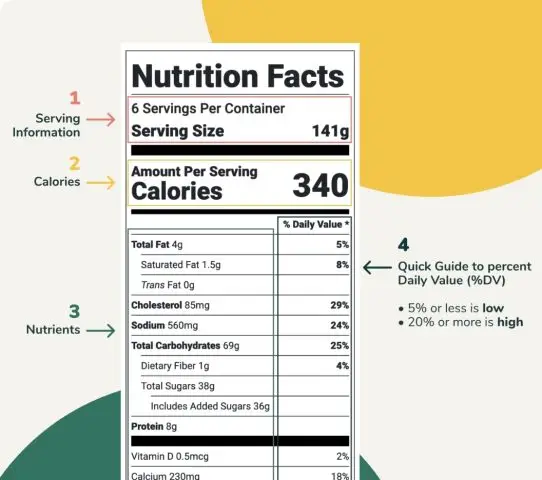In a world where we are constantly bombarded with food advertising and marketing, it can be hard to make healthy food choices. By understanding what the nutrition label on your food means, you can arm yourself with the information you need to make the best choices for your health.
Making healthy food choices is one of the most important things you can do for your overall health and well-being. Nutrition labels can be a helpful tool in making these decisions, as they provide valuable information about the nutrient content of a food.
Nutrition labels also provide information on the amounts of specific nutrients in food. This can be helpful if you’re trying to make sure you’re getting enough (or not too much) of certain nutrients like fat, cholesterol, sodium, or fiber.
How can a nutrition label help you make healthy food decisions?
The nutrition label provides valuable information about the amount of calories, fat, sodium, and other nutrients in food. This information can help you compare different foods and make informed choices about which ones are best for you.
See How FoodLabelMaker Can Help You
How can a nutrition label help you in maintaining a healthy weight?
Maintaining a healthy weight is important for overall health. By understanding the calorie content of the foods you eat, you can make sure that you are not consuming more calories than you need. The nutrition label can also help you choose foods that are lower in fat and sugar, which can help with weight management.
How can a nutrition label help you understand and limit your nutrient consumption?
Some nutrients, like fat and sodium, should be limited in your diet. The nutrition label can help you to see how much of these nutrients are in a food so that you can make choices that are best for your health.
When looking at nutrition labels, there are a few things to keep in mind. First, the serving size listed on the label is not always indicative of how much you should actually be eating. Second, the calories listed are often for one serving, so if you eat multiple servings, you’ll need to multiply the calorie count accordingly. Finally, the nutrient amounts listed on nutrition labels are typically based on a 2,000-calorie diet – so if your caloric needs are different, the amounts of nutrients you should be consuming will also be different.
Overall, nutrition labels can be a helpful tool in making healthy food choices and ensuring you’re getting the nutrients you need. However, it’s important to keep in mind that they’re only one part of the equation – pay attention to your own individual needs and preferences as well.



